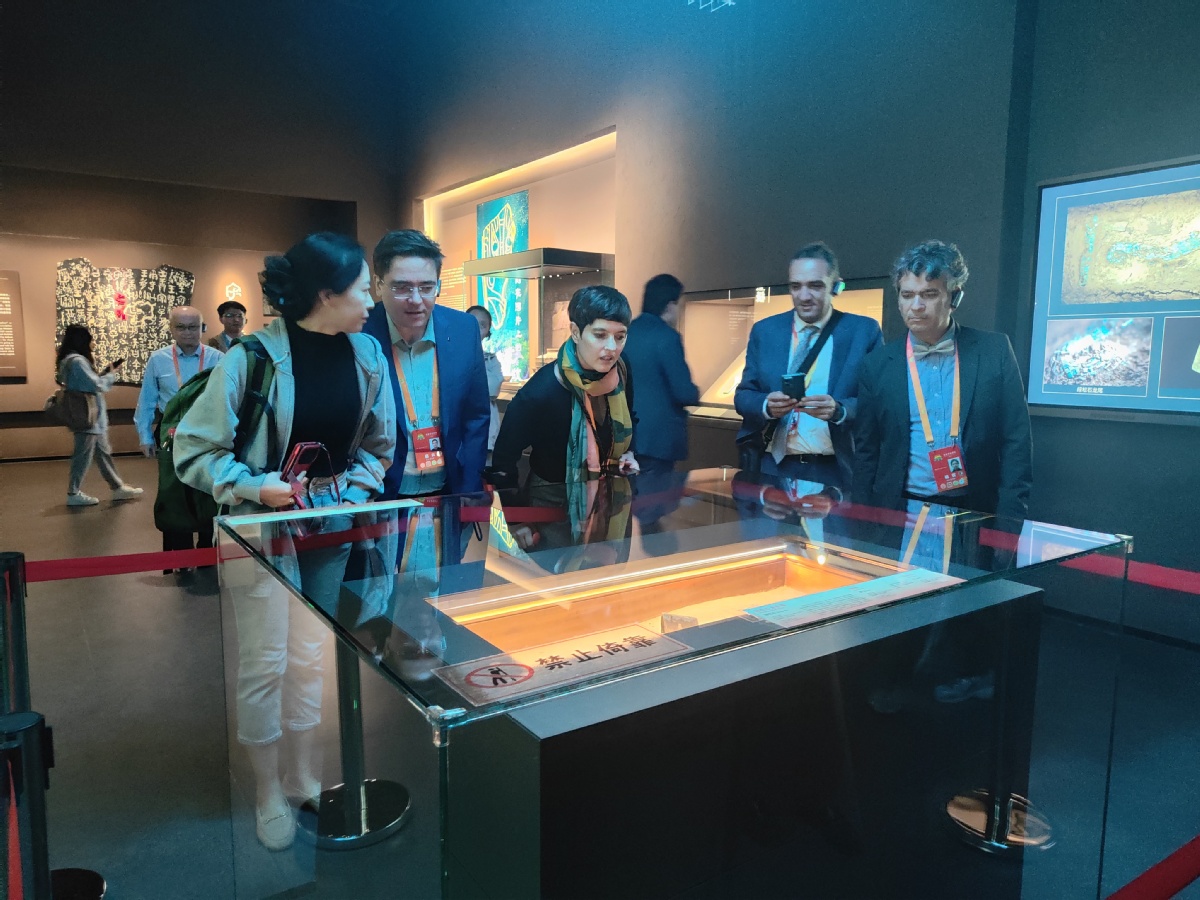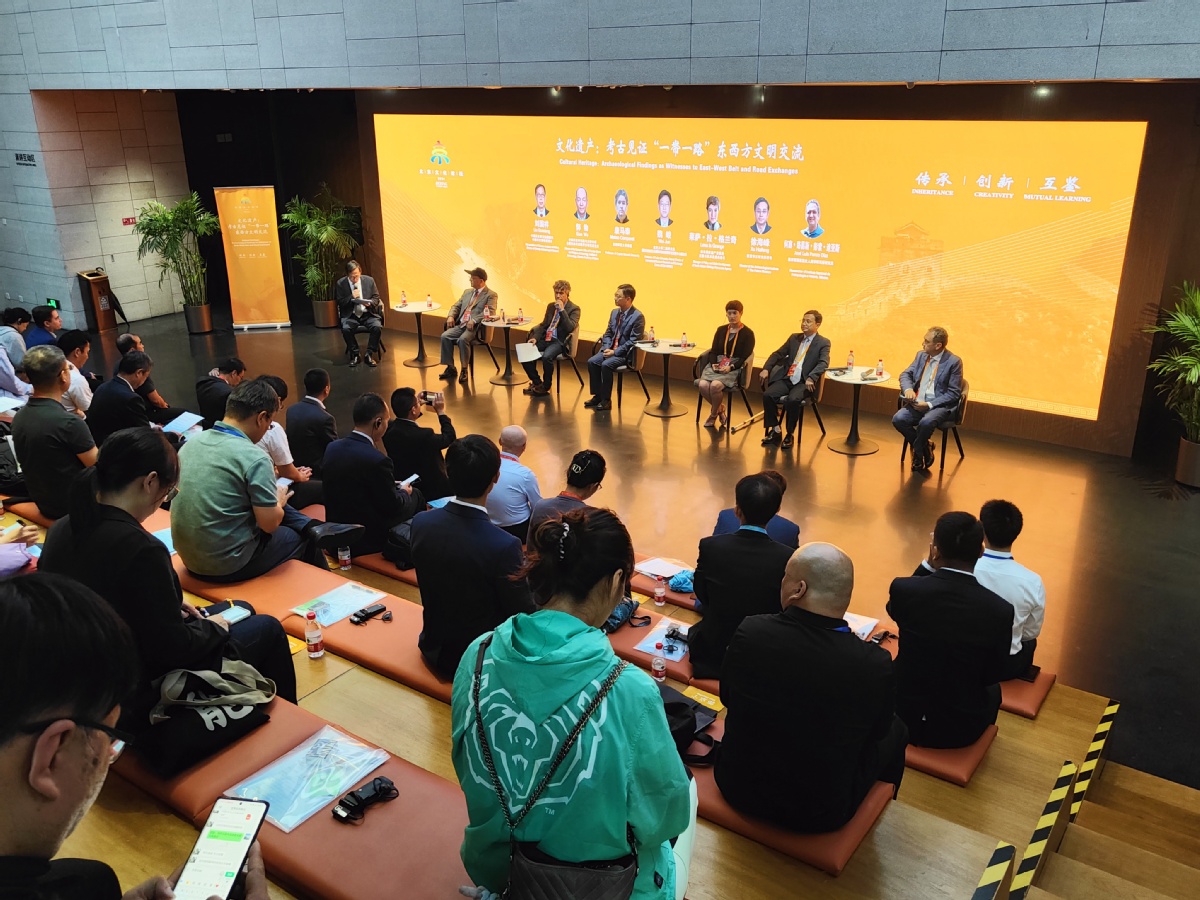
Foreign archaeologists visit the Chinese Archaeological Museum in Beijing on Friday. [Photo by Wang Ru/chinadaily.com.cn]
Archaeological Findings as Witnesses to East-West Belt and Road Exchanges, a salon as part of the series of activities of the ongoing Beijing Culture Forum, was held at the Chinese Archaeological Museum in Beijing on Friday.
Archaeology professionals from China and other countries gathered to express their ideas on cultural exchanges related to the ancient Silk Road and the Maritime Silk Road.
Guo Wu, director of the Research Office of Frontier Ethnic and Religious Archaeology, the Institute of Archaeology at the Chinese Academy History, introduced the history of the ancient Silk Road and highlighted its role in cultural exchanges.
"Not only silk, coins, glass, gold and silverware, and other material products were transported along the Silk Road, but more importantly, various religions, philosophies, literature, music and dance, science and technology, folklore, and other forms of ideological consciousness spread in the same way," said Guo.
"Envoys, religious figures, armies, and merchant groups were the active protagonists on the Silk Road, endowing the world of that era with abundant material and spiritual civilizations. People's life was thus rich and colorful, their hearts were broadened and opened up, and their thoughts were therefore tolerant and profound," he added.

Scholars discuss cultural exchanges through the ancient Silk Road and the Maritime Silk Road at a salon as part of the ongoing Beijing Culture Forum on Friday. [Photo by Wang Ru/chinadaily.com.cn]
Matteo Compareti, a professor at the Capital Normal University in Beijing, discussed cultural exchanges along the road by citing the example of murals of Mogao Caves in Dunhuang, Gansu province, a UNESCO World Heritage Site. He said some murals show gods that originated from the Mesopotamia and transported to China by the Sogdians through the Silk Road.
"In the Middle Ages, the Sogdians were one of the most active groups on the Silk Road. They formed caravans and became the primary facilitators of trade between various countries and ambassadors of cultural exchange," said Liu Guoxiang, deputy director of the Chinese Academy of History.
Wei Jun, an archaeology researcher at the Fudan University in Shanghai, introduced the development of ancient Maritime Silk Road and the latest archaeological development related to it since 2020 in China.
Lesa la Grange, manager of Policy and Skills Development Unit of South African Heritage Resources Agency, said South Africa is stepping up efforts in underwater archaeology as well. She said South African and Chinese scholars are cooperating to carry out archaeological work on a ship that carried looted treasure from China's Yuanmingyuan, the Old Summer Palace in Beijing, to the United Kingdom originally, but sank into the sea area of South Africa unexpectedly in the 1860s.
"We are expecting fruitful results of this project, which may lay a foundation for the mutual learning of South Africa and China in studies of historical heritage and facilitate future cooperation," she said.